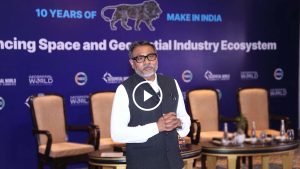The Indian government recently notified the National Geospatial Policy 2022. The Geospatial World talked to industry leaders to know their reactions and find out the way ahead. We will be publishing a series of interviews on the policy. First in the series is the Esri India Managing Director, Agendra Kumar.
What is your first reaction to the National Geospatial Policy 2022 notified by the government of India last week?
I have found the New National Geospatial Policy 2022 very enabling for the geospatial industry, user segments, and the country as a whole. The policy is a concrete step taken by the government to make India a leader in the geospatial domain at the global level. I am happy that the government has acknowledged geospatial industry as a critical industry in the national economy.
How forward looking this policy is?
The National Geospatial Policy 2022 is a very progressive policy and very well-structured. It gives chance to all the stakeholders to actively participate and contribute to the development of the overall geospatial ecosystem. Its focus on innovation, public-private partnership and strengthening the geospatial infrastructure with new data sets and technologies will play a fundamental role in India’s growth story.
What are the new opportunities that this policy will unravel?
The geospatial policy has covered efficiently the overall geospatial spectrum, be it geospatial education and skill development, formation of the Geospatial Industrial Development Board, incubation centers, or surveyors’ registration and certification. It offers a complete bouquet that establishes geospatial as the key enabler of India’s ‘$5 trillion economy’ vision.
The democratization of data will not only increase the adoption of technology within the government sector but will allow the industry to innovate and develop solutions for various purposes.
The new paradigm will also create a lot of interest from the global geospatial community especially from industry, academia, and development organizations to make investments in India for business and research purposes. This, in turn, will create additional business and learning opportunities for the Indian geospatial industry and academia.
Which area of the geospatial technology has not found adequate mention in the policy?
The National Geospatial Policy 2022 has covered almost all prominent geospatial technologies. However, since the technology landscape is ever evolving, in order to make India keep pace with the world, instead of waiting till 2035, we must start working in parallel to adopt advanced technologies like digital twin, high resolution/accurate bathymetric geospatial data of inland waters, survey and mapping of sub-surface infrastructure in major cities and towns. The Indian geospatial industry has the technology, capacity and most importantly the will to build the overall geospatial infrastructure much before the laid timelines.









